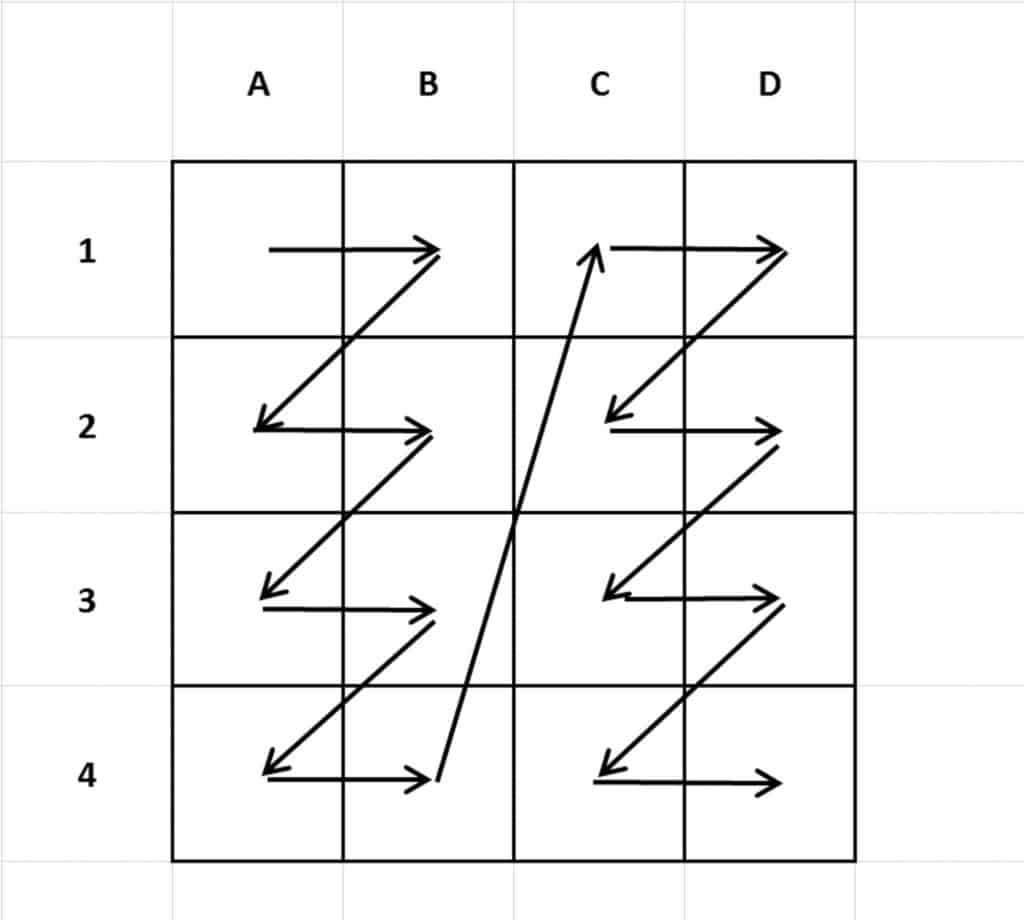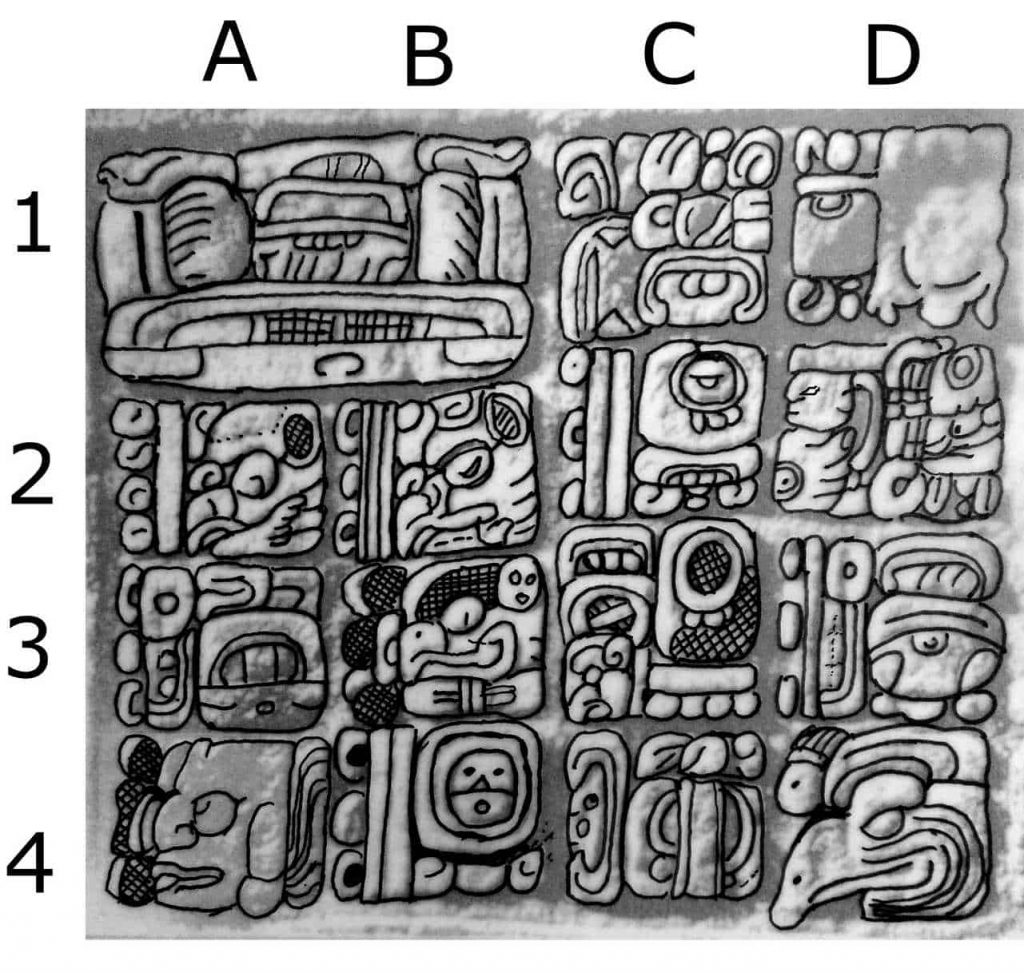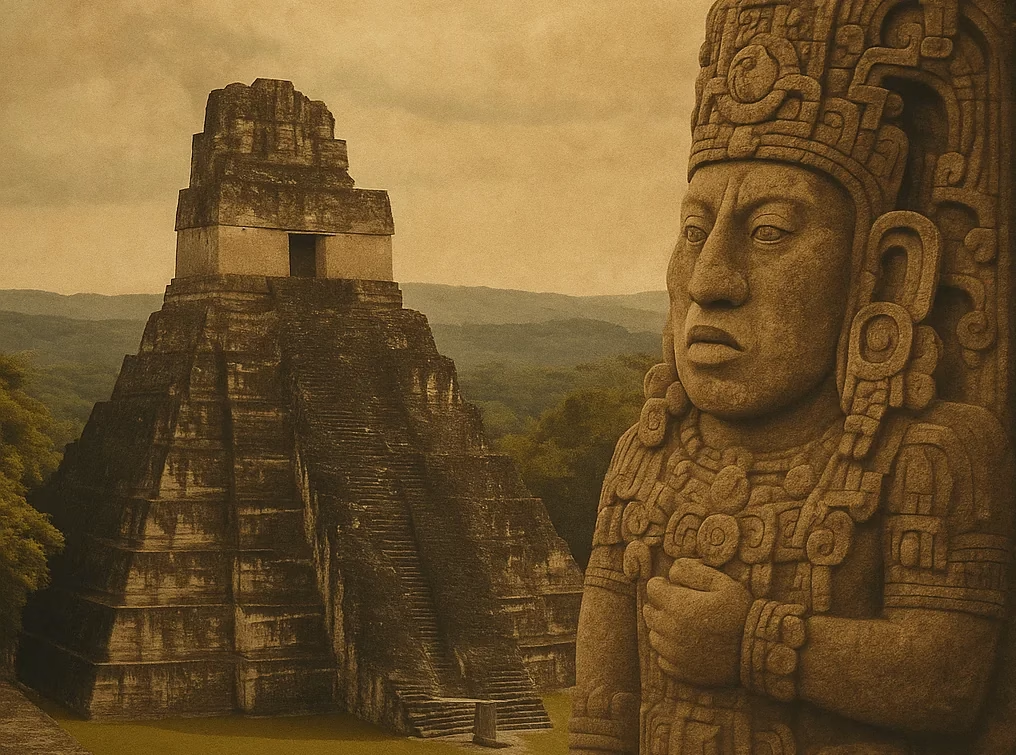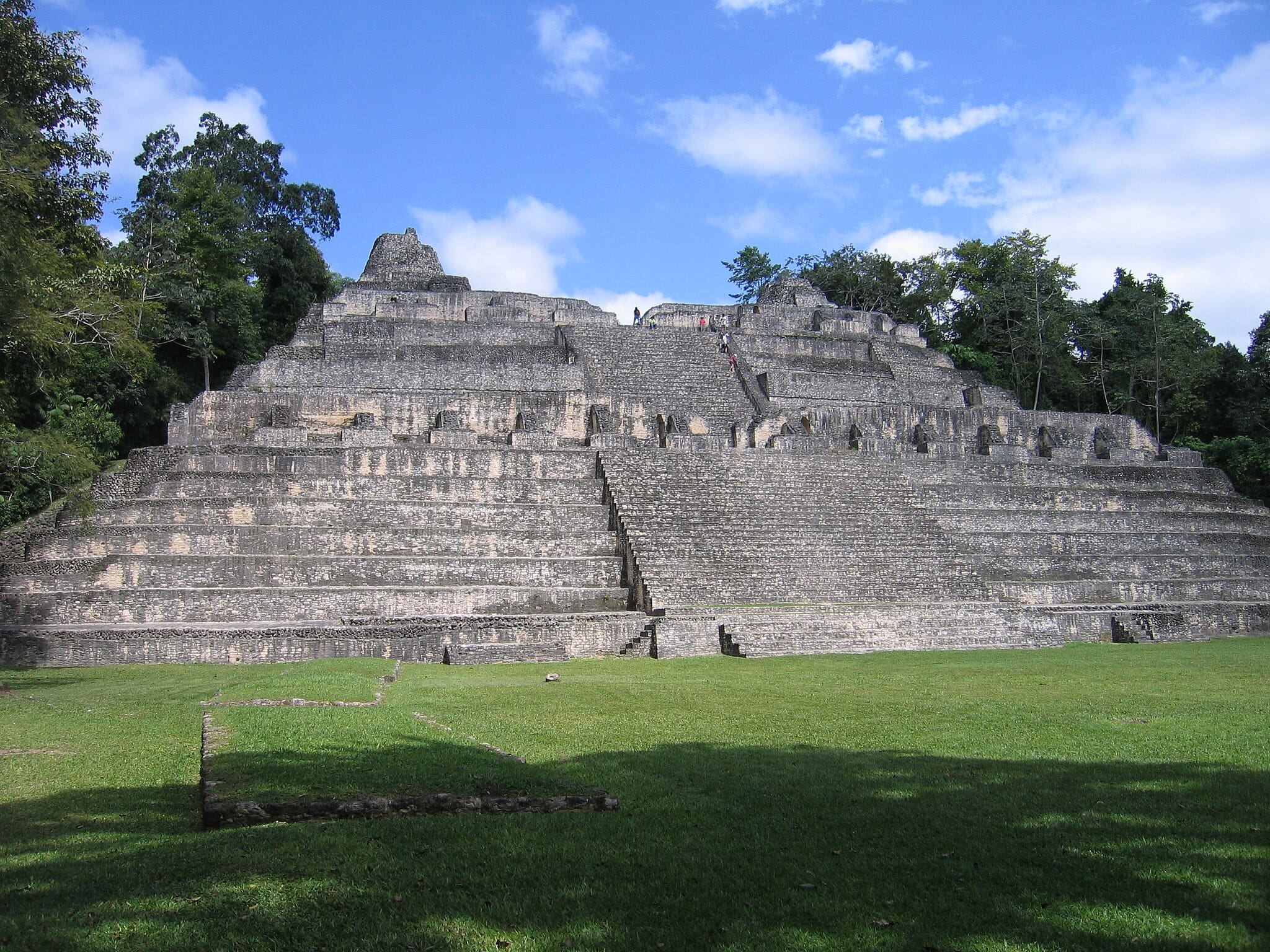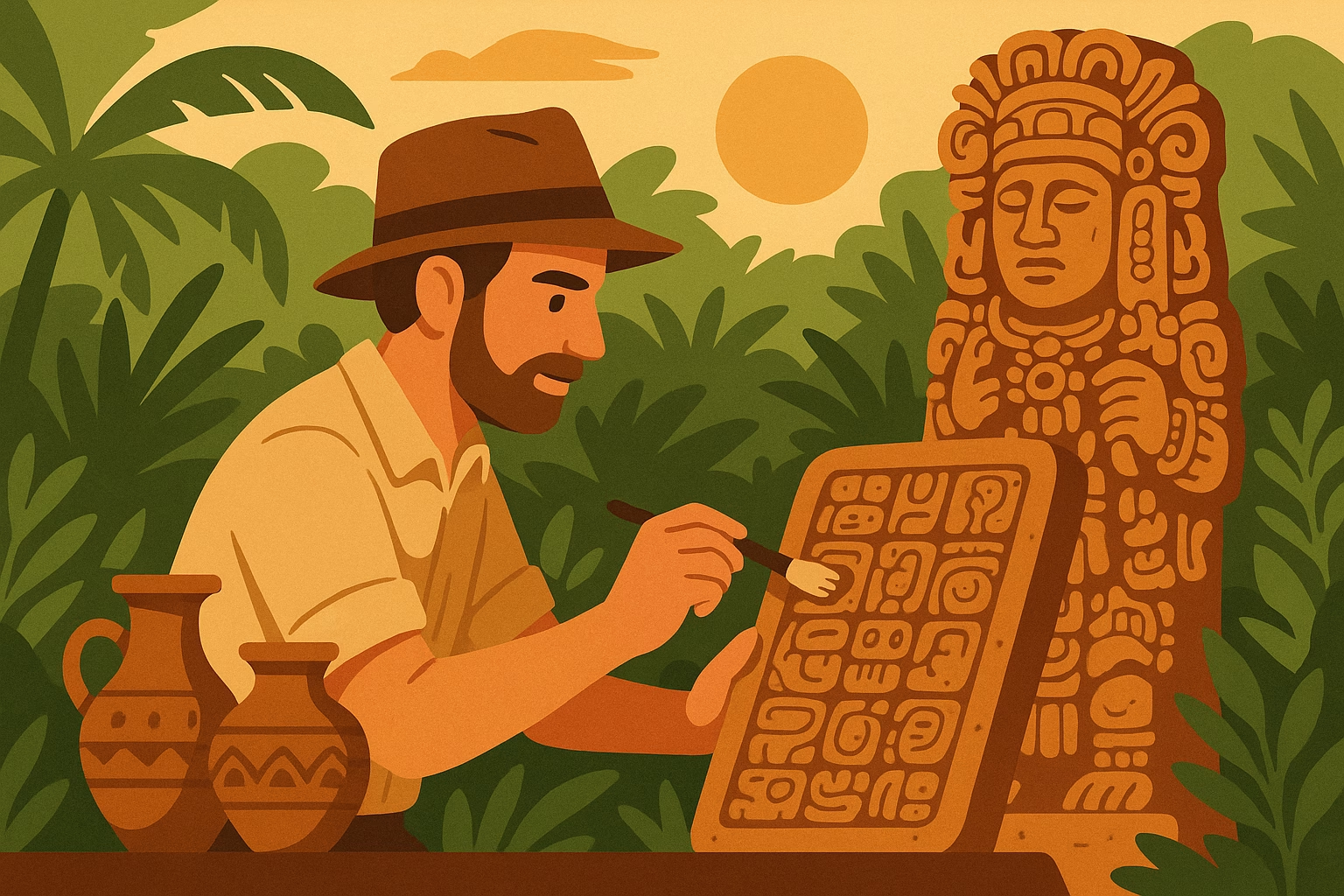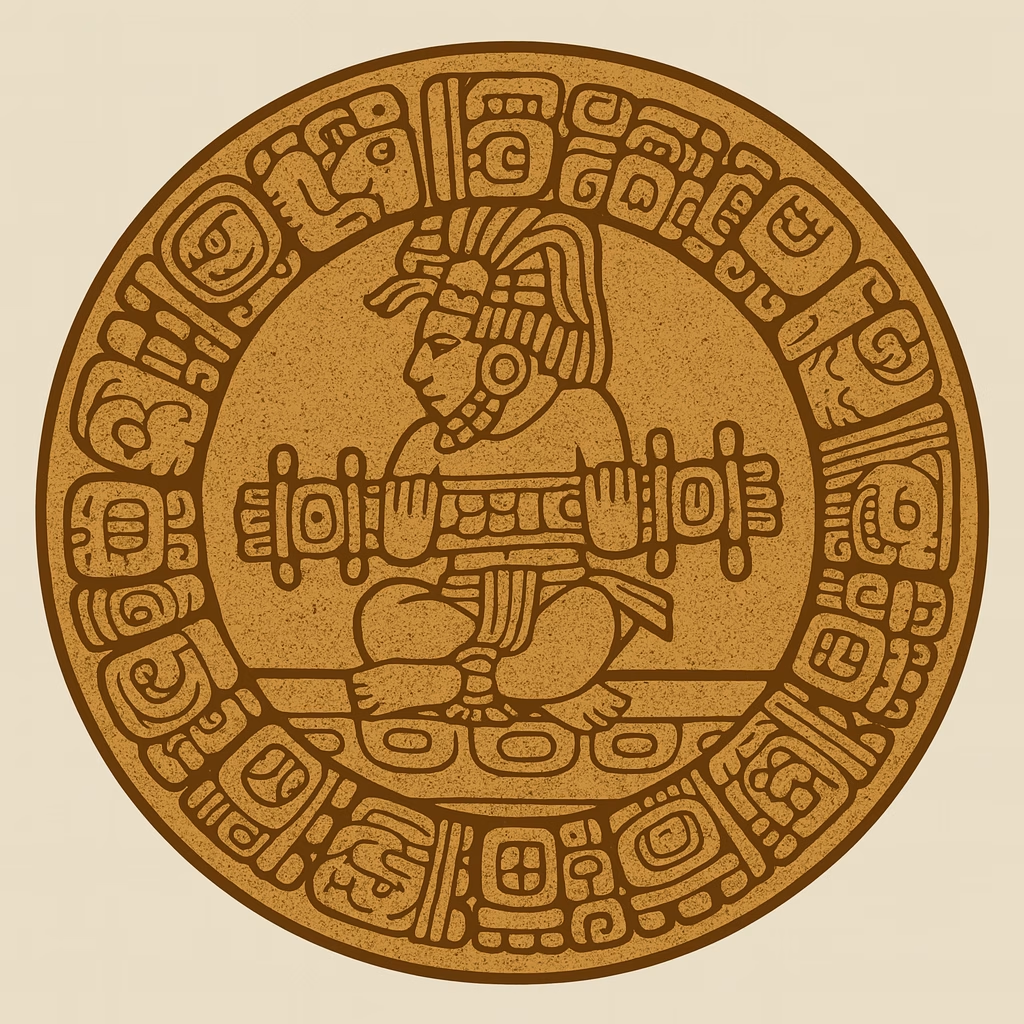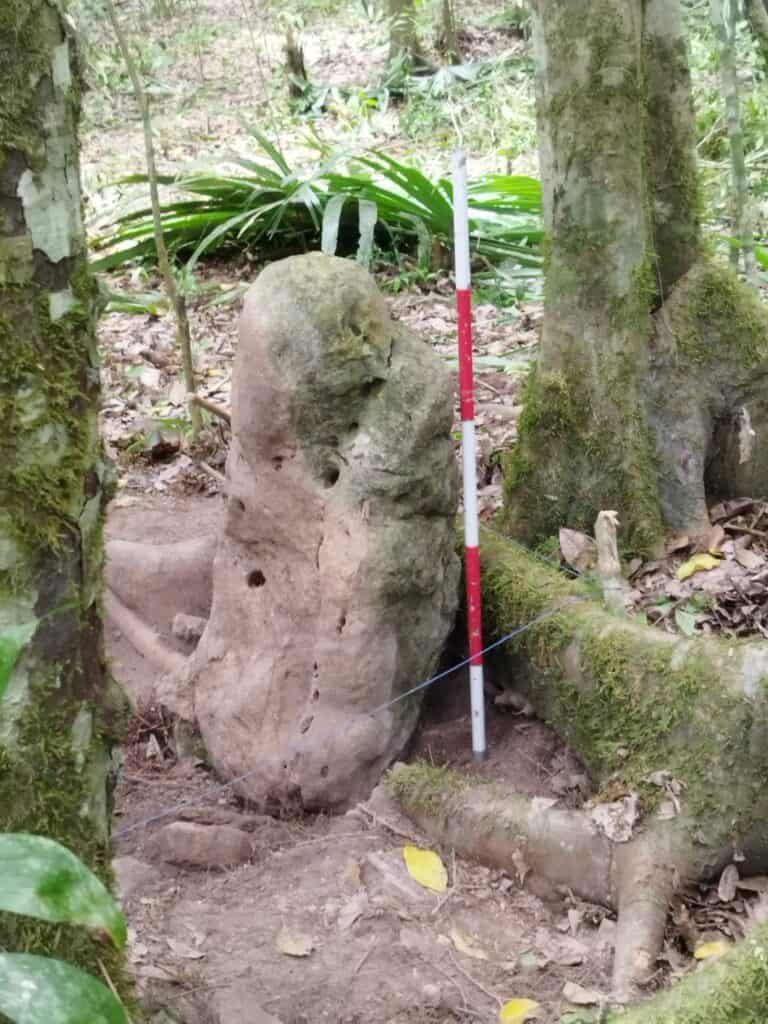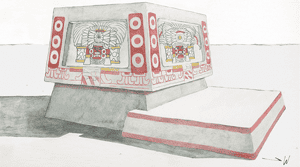The Maya Calendar – Part 7 – The Date in the Maya Inscriptions
This post “The Maya Calendar” is an excerpt of the 2nd edition of my book “The Maya Sites – Hidden Treasures of the Rain Forest”, a travel guide to the most important Maya sites on the Yucatán peninsula – in México and Guatemala. The 2nd edition will be published as print and ebook in spring 2018.
I split this article into seven parts:
- The Maya calendar – Part 1 – Introduction
- The Maya calendar – Part 2 – Haab, the Solar Year
- The Maya calendar – Part 3 – Tzolkin, the Sacred Calendar
- The Maya calendar – Part 4 – The Calendar Round
- The Maya calendar – Part 5 – The Long Count
- The Maya calendar – Part 6 – The Numbers and the Vigesimal System <<< You are here
- The Maya calendar – Part 7 – Dates and Numbers in the Inscriptions
The date in the Maya inscriptions
As you already have seen in Part 5 – The Long Count, the Maya used a special way to define dates for their inscriptions – the Long Count.
This part of the series shows how to read an inscription and understand the calendar date that was noted more than 1000 years ago.
The reading direction of the inscriptions
The reading direction of the inscriptions was clearly defined. The Maya used (mostly) two columns to arrange their glyphs. These were read line by line, starting at the top from left to right. The diagram illustrates this process.
I don’t want to hide the fact that there were also other arrangements. The Maya were artistically imaginative. If the images were arranged in several columns with an odd number, i. e. 3 or 5, then at first only the first column was read on its own, from top to bottom. Columns 2 and 3 followed then as described above. However, horizontal and even diagonal arrangements have also been detected.
Components of date inscriptions
Now we have almost all the ingredients together used in the classical Maya period for a date inscription. But before I present the missing parts, I would like to briefly explain the basic structure.
A date in the inscriptions usually consists of two sections or sequences, the Initial Series and the Supplementary Series. The Initial Series is always present. The supplementary series is optional and therefore not always used.
The Inital Series consists of:
- Introductory Glyph
- Date of the Long Count
- Day of the Tzolkin Calendar
- Day of the Haab Calendar
If the inscription contains a supplementary part, this is inserted between the Tzolkin and Haab entries.
The inscription then consists of the following, additional parts. The Haab entry is moved to the bottom:
- The Nine Lords of the Night
- The Lunar Series
- Day of the Haab Calender
Furthermore, I have renounced the representation of the symbols of the Lords of the Night and the Lunar Series.
In addition to the previously mentioned cycles, the Maya also used cycles in their inscriptions for 7 and 819 days. Interesting in the latter is the fact that 819 is the product of the numbers 7, 9, and 13, so you get 819 when multiplying those 3 numbers.
These cycles were rarely used and I will not go deeper here.
Now let’s take a closer look at the items:
ISIG – The Initial Series Introduction Glyph
In many inscriptions, before the actual date inscription begins, a glyph is found, which in Maya research is referred to as the initial glyph or ISIG for “Initial Series Introduction Glyph” or simply Initial Glyph.
This glyph marks the beginning of the text. It often extended over two columns. However, sometimes it takes up only one column.
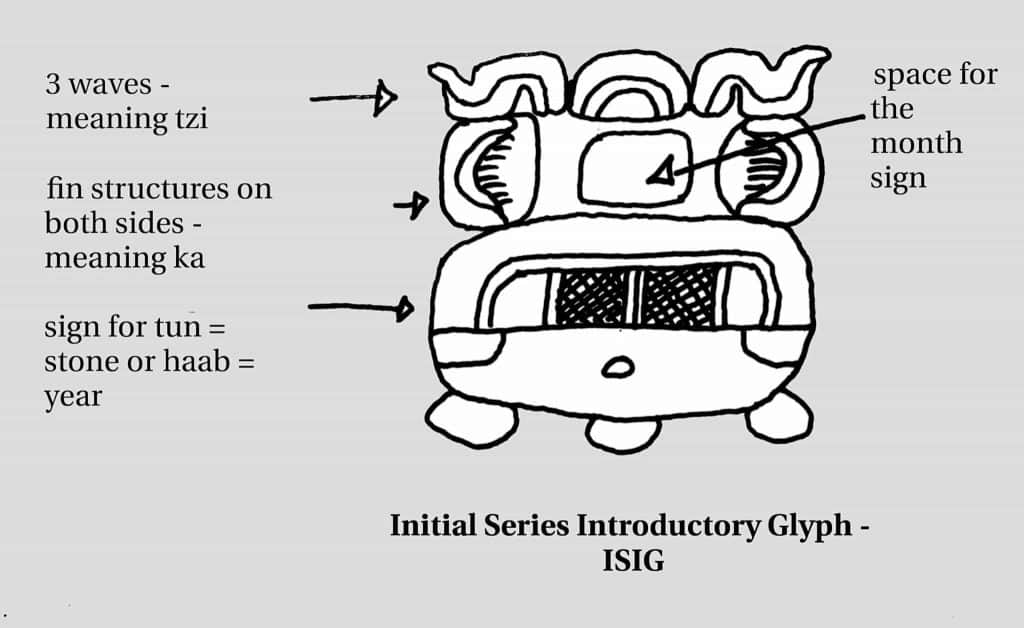
The Maya Calendar – ISIG – Initial Series Introductiory Glyph
The initial glyph consists of various elements. At the top, a wave structure marks the glyph – Mayanists call it “Volutes” because it reminds of similar structures of the same name found at the capital of Ionian columns.
On the sides, the structures are called “fish fins” by the researchers sometimes referred to as “comb” structures.
The lower part is occupied by the symbol for Tun (stone or year). In the central area, there is a variable position. The month sign of the event has been entered here.
The date of the long count
The glyphs for the long count follow immediately after the ISIG. In most cases, the long count starts with the Baktun glyph.
So you have to expect five glyphs in the order Baktun, Katun, Tun, Uinal, Kin.
By the way, due to the fact that the arrangement and sequence of a long count date are strict, it is possible to determine the numerical value of the periods without knowing the hieroglyphs exactly. This is helpful if parts of the inscription are destroyed.
The Tzolkin date
The Long Count glyphs are followed by single glyph naming the Tzolkin date.
The Nine Lords of the Night
If the Supplementary Series is present, the glyphs for the Lord of the Night are depicted next. The Lords of the Night are nine deities of the Maya. Every night is under the protection of another “Lord”.
We know what these glyphs look like, but nobody knows their names yet. That’s why they are simply named G1-G9. So this is another cycle with 9 units.
Usually, the G Glyph is accompanied by the so-called F Glyph. Sometimes G and F Glyph are conflated. The F Glyph is read as “was in the office”.
The Lunar Series
The lunar series consists of 4 glyphs containing certain information related to the moon phases. The lunar phase of the Maya began at new moon. The glyphs denote the lunar age, the last phase of the moon, the lunar deity and the length of the current phase.
- The age of the moon phase represents the number of days that have passed in the current moon phase.
- The number of phases of the moon: How many phases have already passed during the year.
- The lunar deity that was responsible for that night.
- The Moon phase length can be 29 or 30 days
Haab date
A single glyph names the day of the Haab calendar and indicates the end of the date entry.
Now we have everything we need to read a long count date. We know the numbers, symbols of the periods and the symbols used in the Haab and Tzolkinkalender.
Here are two examples:
The two examples I cite here are often used in Mayan literature. The first is a date from Stele C in Quirigua. Quirigua is a Maya site located in Guatemala near Copan and the border to Honduras. This inscription is a beautiful example of the creation date.
13.0.0.0.0 the Creation Date
Since in this case there are no entries with the supplementary series, the entry for the day of the Haab follows immediately after the day of the Tzolkin calendar. For the drawing, I used a drawing by Morley as a template.
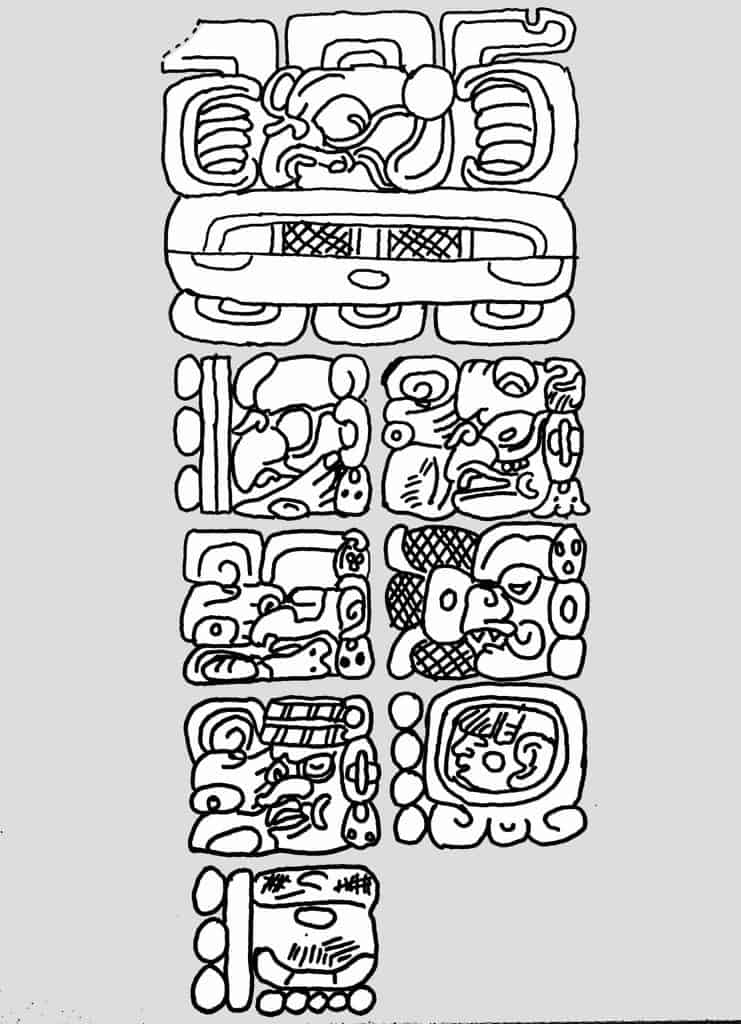
The Maya Calendar – Stela C – Quirigua – The Creation day
You can see from this example that you don’t necessarily need to recognize the symbols for the time periods to read the date. The position of the number within the inscription indicates whether you are dealing with Baktun, Katun, Tun, Uinal or Kin.
The second example shows the lower part of stele 11 in Yaxchilan. Here the supplementary series is shifted between Haab and Tzolkin entry.
In this case, I used a photo as a template for the drawing.
The meaning of the calendar entry is as follows. My translation of Stela 11 is based on the translation:”Yaxchilan: The Design of a Maya Ceremonial City by Carolyn E. Tate.”
Under the reign of the month of Zec
It was 9.16.1.0.0.0
It was 11 Ahau (Tzolkin)
The Lord of the Night was (G8)
It was the 12th day of the moon phase
The 5th phase of the moon was over
His holy name was… <unknown>
The moon phase had 30 days
It was 8 Sek (Haab)
Now we want to know when it was according to the Gregorian calendar. So here is the calculation:
(9*20*20*360)+(16*20*360)+(1*360)+(0*20)+(0*1)= 1411560
Used in the simplified formula we had seen in the part about the long count:
Year = (number of days / 365.25) – 3112.31
Year = 752,25
Now we know at least that the events recorded in Stele 11 must have taken place around the year 752 AD.
If you use a computer program for the date conversion you can get day and month as well.
The date depicted on stele 11 corresponds to May 1, 752 AD. It is the date of the ascent of the throne of the ruler Bird-Jaguar IV in Yaxchilán.
Conclusion
Congratulations! If you’ve followed the text so far, now you know how to read simple date inscriptions. Your fellow travelers will be amazed if you can explain to them what time an inscription tells them.
Well, that’s enough for now via the calendar system. In the bibliographical references, you will find several good textbooks, some of them free of charge on the internet, for all those who want to get deeper into the topic.
Literature for further reading
Will follow soon….
